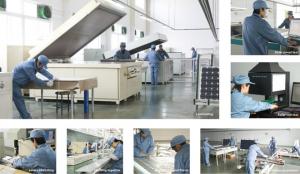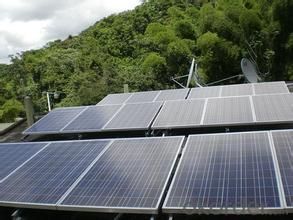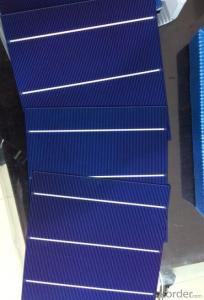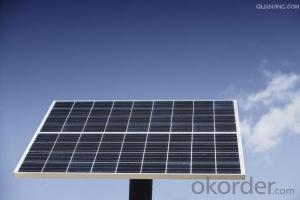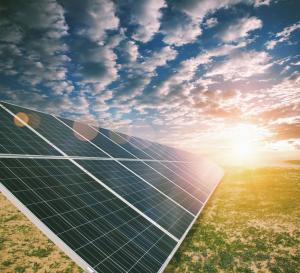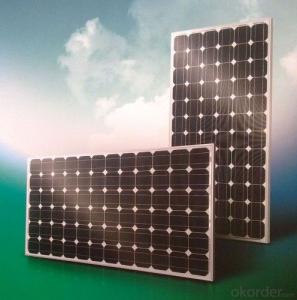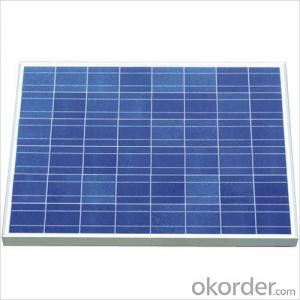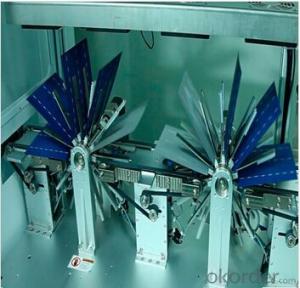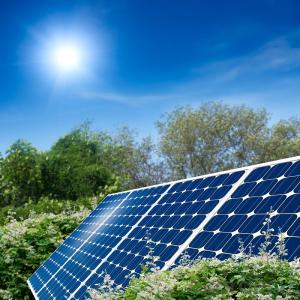1.5 V Solar Cells Monocrystalline Silicon Solar Panel for 310W
- Loading Port:
- Shanghai
- Payment Terms:
- TT or LC
- Min Order Qty:
- 100 watt
- Supply Capability:
- 1000000 watt/month
OKorder Service Pledge
OKorder Financial Service
You Might Also Like
Monocrystalline Solar Module for 250W Series Description:
Monocrystalline Solar Module for M125-15W l : High efficiency crystalline solar cell. Even if under the weak light, the solar module can produce maximum power output.
II Tempered glass (toughened glass): Anti-reflecting coating and high transmission rate glass increase the power output and mechanical strength of solar module.
III EVA and TPT: Using high quality EVA and TPT to prevent destroying and water.
IV AI frame: Without screw, rner connection. 6 holes on the frame can be installed easily.
V Junction box: Multi function junction box with water proof.
VI Long lifetime: ≥25 years; Less power decrease.
VII Good performance of preventing from atrocious weather such as wind and hails.
VIII Resisting moisture and etching effectively, not effected by geology.
IX The certificate issued by international authority: UL, TUV, IEC, CE.
2. Standard Test Conditions of Monocrystalline Silicon Solar Panel:
The opto-electrical specifications shown below are stabilized values being measured at Standard Test Conditions, Irradiance: 1000W/m2, Spectrum: AM1.5 at 25°C, The info below is subject to manufacturing tolerances. Where appropriate minutes of measurement are available and are used for the dimensioning of the installation.
Advantages of Monocrystalline Silicon Solar Panel
• CNBM Solar performance guarantees for 25 years
• 12 years guarantee for workmanship
• Timeliness of delivery
• Quality Products certified (TÜV, UL, CE, ISO)
3. Solar Panel Images


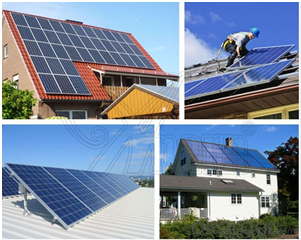
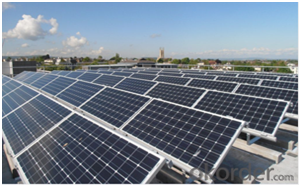
How about your company?
CNBM Solar photovoltaic (PV) Panel has various wattage from 1.5W to 315W to meet the demand of every customer. It is the optimal choice for both on-grid and off-grid power systems. CNBM Solar panel offers high performance of power warranty and good after sale service, we have professional people to reply your problem anytime.
CNBM International Corporation's products including Monocrystalline Solar Panel, Polycrystalline Solar Panel have received and enjoyed famous reputation in many countries and regions in the world .As a solar panel supplier in China, we strive to provide our customers with excellent service, superior products and unmatched value.
How to guarantee the quality of the products?
CNBM Solar performance guarantees for 25 years
• 12 years guarantee for workmanship
• Timeliness of delivery
• Quality Products certified (TÜV, UL, CE, ISO)
How long can we receive the product after purchase?
In the purchase of product within three working days, We will arrange the factory delivery as soon as possible. The pecific time of receiving is related to the state and position of customers.Commonly 7 to 10 working days can be served.
- Q: Can solar cells be used in high-altitude areas?
- Yes, solar cells can be used in high-altitude areas. In fact, solar cells can be even more effective in high-altitude regions due to the increased intensity of sunlight and reduced air pollution.
- Q: Can solar cells be used in combination with batteries?
- Yes, solar cells can be used in combination with batteries. Solar cells convert sunlight into electrical energy, which can be used to charge batteries. This allows for the storage of excess solar energy during the day and the use of that stored energy during nighttime or when sunlight is not available.
- Q: How do solar cells perform in areas with limited space for installation?
- Solar cells can still perform well in areas with limited space for installation, thanks to advancements in technology. Compact and efficient solar panels are designed to maximize energy production even in small areas. Additionally, innovative installation techniques such as rooftop solar panels or solar canopies can help utilize available space effectively.
- Q: Can solar cells be used in public charging stations for electric vehicles?
- Yes, solar cells can be used in public charging stations for electric vehicles. By harnessing solar energy, these charging stations can provide clean and renewable power to charge electric vehicles, reducing reliance on traditional grid electricity and contributing to a more sustainable transportation system.
- Q: Is that true that the price of solar cells will be reduced in the coming year?
- If the solar cells' price really goes down, I will definitely start on a new project of installing the solar cell panel in my factory.
- Q: Can solar cells be used in telecommunications systems?
- Yes, solar cells can be used in telecommunications systems. Solar cells are capable of converting sunlight into electricity, which can power various telecommunications equipment such as base stations, repeaters, and remote monitoring systems. This allows for reliable and independent power supply in remote areas or during power outages, making solar cells an energy-efficient and sustainable solution for telecommunications systems.
- Q: Can solar cells be used for powering remote surveillance cameras?
- Yes, solar cells can be used for powering remote surveillance cameras. Solar cells capture sunlight and convert it into electricity, which can then be used to power various devices, including surveillance cameras. This makes solar-powered surveillance cameras a sustainable and cost-effective option for remote locations where access to electrical grids may be limited or non-existent.
- Q: How to get high voltage and high current output of solar cells?
- If you want to get the high voltage and high current output of the solar cells, you can put them in serial and serial-parallel approaches.
- Q: How does a solar cell work?
- A solar cell works by converting sunlight into electricity through the photovoltaic effect. It consists of a thin semiconductor material, usually silicon, which absorbs photons from sunlight. When the photons strike the semiconductor material, they transfer their energy to the electrons in the material, causing them to become excited and move freely. This creates a flow of electrons, known as an electric current. The solar cell contains two layers, one with excess electrons (n-type) and the other with a deficiency of electrons (p-type), creating an electric field. As the excited electrons move towards the p-n junction, the electric field forces them to move in one direction, resulting in a usable electric current. This current can be harnessed and used to power various devices or stored in batteries for later use.
- Q: How are solar cells tested for quality?
- Solar cells are tested for quality through a series of rigorous assessments. This typically involves measuring their electrical characteristics such as efficiency, power output, and voltage under standardized conditions. Additionally, durability and reliability tests are conducted to evaluate their performance under different environmental conditions, such as extreme temperatures or humidity. Other quality tests may involve visual inspections, spectral response analysis, and thermal cycling to ensure that the solar cells meet the required standards and perform optimally over their expected lifespan.
Send your message to us
1.5 V Solar Cells Monocrystalline Silicon Solar Panel for 310W
- Loading Port:
- Shanghai
- Payment Terms:
- TT or LC
- Min Order Qty:
- 100 watt
- Supply Capability:
- 1000000 watt/month
OKorder Service Pledge
OKorder Financial Service
Similar products
Hot products
Hot Searches
Related keywords
